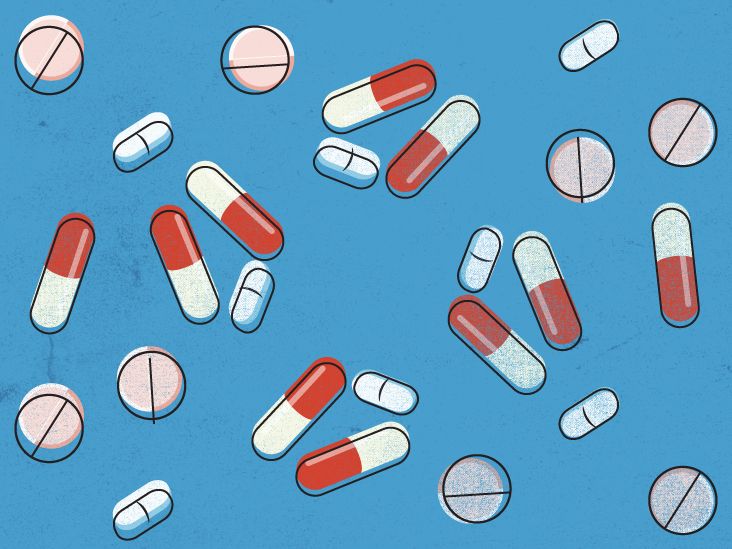Exploring the gluten free ADHD diet connection
Attention deficit hyperactivity disorder (ADHD) affects an estimated 9.4% of children in the United States. Managing symptoms like impulsivity, hyperactivity and inattention often involves medication, therapy and lifestyle changes. Studies reveal connections between worsening symptoms and particular diets high in additives, preservatives, food colorings and refined sugars. This led to emergence of gluten free and casein free diets as alternative ADHD treatments.
How gluten impacts ADHD brains
Gluten refers to proteins present in wheat, barley and rye products that some people cannot properly digest. People with celiac disease or non-celiac gluten sensitivity experience digestive distress upon consuming it. But those with ADHD also commonly react negatively to gluten through pathways just starting to get researched.
It appears gluten proteins initiate neuroinflammatory responses in ADHD brains contributing to executive functioning and behavioral issues. Going 100% gluten free calms this inflammation to reduce hyperactivity, impulsiveness, inattention and mood disorders.
Other foods potentially worsening ADHD
Beyond just gluten, five other notorious food categories worsening ADHD stand out in research:
- Refined Sugars - Candy, sodas, concentrated sweeteners cause blood sugar spikes and energy level extremes.
- Artificial Additives - Dyes, preservatives, emulsifiers, flavors introduce allergens and toxins.
- Saturated Fats - Greasy, fried fast foods trigger inflammation plus concentration lags.
- Simple Carbohydrates - Rapidly absorbed refined grains, white flours deplete nutrients.
- Caffeine/Energy Drinks - Excess stimulation only briefly masks ADHD then worsens rebound effects.
Eliminating these ADHD trigger items through gluten/casein free diets helps some children better control symptoms without medications.
Establishing Gluten Free Diets for ADHD
Committing to gluten free and casein free dietary protocols requires diligence and proactive preparations. Begin the transition through these practical steps:
1. Purge Gluten Containing Foods
First scrutinize pantry and fridge contents removing products containing wheat, barley, rye or oats as derivatives. Watch for hidden gluten in sauces, dressings, soups, broths, soy sauce, cold cuts and seasoned rice/potato mixes too. Initially eliminating all suspect items helps get gluten free diets off to smooth starts.
2. Stock Up On Gluten Free Staples
Shop gluten free aisles at grocers for bulk grains like quinoa, millet, rice and certified gluten free oats along with flours made from almond, coconut and chickpeas. Seek gluten free pastas, tortillas, cereals, baking mixes and readable ingredient labels stating gluten free for simple substitutions.
3. Cook Meals From Scratch
Prepare more dishes from raw ingredients low in preservatives, additives and hidden allergens. Adjust favorite family recipes using alternate flours while exploring naturally gluten free cuisines like Thai, Indian and Mexican dishes packed with vegetables, legumes and lean proteins.
Initially overwhelming, prepping unprocessed clean meals from scratch gets easier over time and becomes second nature.
4. Pack Gluten Free School Lunches
Preparing homemade lunches prevents cafeteria meal gluten exposures. Include leftover dinners, sandwiches on certified gluten free bread, fruits, snack bars ensuring no cross contamination and plenty of cold beverages.
Notify schools about new meal plans and clearly label lunch bags gluten free so staff abstain from giving restricted items.
Following Casein Free Diets Too
For enhanced ADHD relief, additionally omitting casein dairy proteins further calms inflammation. Casein and gluten share similar molecular structures so some children react to both. When transitioning to casein free eating too:
- Replace cows milk with nut, grain or soy milks fortified with calcium and vitamin D.
- Eliminate cheese, yogurt, butter, cream, ice cream, sour cream.
- Avoid casein additives in processed foods under names like milk solids, milk protein concentrate etc.
Consulting registered dietitians ensures adequate daily nutrition gets maintained for growing children omitting major food groups long term.
Physical and Mental Improvements
ADHD children adhering to strict gluten free, casein free diets for 6+ months experience measurable wellness improvements:
- Balanced moods - Lesser temper tantrums, irritability, oppositional behaviors
- Restful sleep - Fall asleep easier, sleep more soundly through nights
- Undisrupted focus - Better attention spans, concentration abilities, task completion
- Physical comfort - Reduced headaches, stomach discomfort, joint pains
Though not overnight fixes, restricted diets positively impact 30-70% of young ADHD patients by reducing dietary inflammation triggers.
Reintroducing Formerly Restricted Foods
After following strict elimination diets for an initial ADHD adjustment phase of 6-12 months, cautiously retrying some omitted foods determines personal tolerance thresholds. Slow reintroductions help gauge reactions for customized long term adaptations. Expect potential outcomes like:
- No changes - Indicates underlying sensitivity so take food back out
- Subtle struggles - Limit exposures to trigger items
- No relapses - Adds food back without issue
Recording detailed food journals, mood and behavioral shifts facilitates identifying personal ADHD dietary triggers.
The gluten and casein exceptions
With gluten and casein however, any ADHD improvements gleaned from avoidance means total lifelong abstinence remains essential. Even small hidden exposures perpetuate negative brain responses and chemical cascades.
For these proteins, do not intentionally rechallenge just for testing purposes due to potentials for pronounced regressions.
Aiming for 85% Dietary Compliance
Sticking to overly restrictive diets often proves difficult leading many to ultimately abandon efforts. Setting reasonable adherence goals around 85% helps sustain motivation while allowing some infrequent indulgences.
Strategically plan cheat meals for special occasions like birthday parties or trips so children dont feel deprived. Just get immediately back on track with next gluten free, casein free meal.
Handling accidental exposures
Expect occasional unintentional ingestions like trace restaurant kitchen contaminations. Generally a single gluten slip-up gets forgiven by the body without major health rebounds. Minimize risks by:
- Carrying medical alert cards
- Wearing medical ID bracelets
- Advising relatives and friends
- Requesting special meal preparations
Rallying supportive people helps implement ADHD diets safely long term.
Weighing Gluten Free Diet Pros and Cons
While strong evidence demonstrates gluten and casein free diets bettering ADHD in kids, individual results vary widely. Realistically weigh potential benefits against committed efforts when deciding whether to pursue restrictive protocols.
Possible advantages
- Avoids long term medication side effects
- Decreases behavioral, cognitive and mood symptoms
- Enhances classroom performance
- Improves sleep quality
- Eliminates digestive issues
Potential disadvantages
- Challenging lifestyle adjustments
- Time consuming meal planning and preparation
- Social pressures around modified diets
- Risks of nutritional deficiencies
- Still needing medications and therapy
Collaborating with pediatricians and registered dietitians determines if committing to eliminate problematic proteins suits your familys unique situation.
FAQs
Do gluten free diets work for all kids with ADHD?
No, results vary widely. 30-70% of children show improvements in hyperactivity, focus, behavior and comfort after eliminating gluten long term. The rest demonstrate minor or no changes.
What are initial steps to start gluten free ADHD diets?
First purge home of all foods containing wheat, rye, barley and oats, then stock up on certified gluten free alternative grains, flours, pastas etc. Also prepare school staff for packed lunches.
Is following both gluten free and casein free diets better?
Yes, eliminating both gluten and dairy casein proteins further reduces inflammation associated with worsening ADHD. Replace milk with non-dairy alternatives low in additives.
If my child accidentally eats gluten, what should I do?
Don't panic or punish for occasional accidental ingestion. The body forgives singular slip-ups. Just resume the gluten free diet with the next meal. Carry medical cards and bracelets to prevent exposures.
Can I ever reintroduce formerly eliminated foods?
After 6+ months, cautiously retrying other omitted items helps gauge personal reactions. But lifelong gluten and casein avoidance remains essential for those showing initial ADHD improvements.
Disclaimer: This article is for informational purposes only and does not constitute medical advice. Always consult with a healthcare professional before starting any new treatment regimen.
Related Coverage
Facing Adderall shortages? Consider affordable generic Dexedrine options like dextroamphetamine sulfate for comparable ADHD symptom relief at lower cost....
Comparing Strattera and Ritalin for ADHD treatment. Find out which medication may work best for your symptoms and lifestyle....
Wellbutrin and Vyvanse are sometimes used together to treat adult ADHD. Wellbutrin enhances focus and counteracts stimulant side effects....
Online ADHD assessment and medication management provides a convenient way for busy adults to get diagnosed and access prescription stimulants like Adderall and Vyvanse....
Learn all about Adderall and Focalin - from how these two common ADHD stimulant medications differ in onset, duration, ingredients, side effects and more....
Games build crucial skills for children with ADHD. Explore top game types and titles that create engaging outlets for energy and improved focus, memory and coordination....
Adderall shortages have led many to buy it illegally, but with prices from $3 to $30 a pill and major health/legal risks, it's an extremely dangerous idea....
Protein snacks like yogurt, nut butter, cheese and eggs provide kids with sustained energy and nutrition for growth and development. Discover the best snacks....
Some people report needing to urinate more frequently after eating cinnamon. Learn why cinnamon may stimulate more pee stops and how to prevent excessive nighttime urination....
Want to capture amazing bounce house party photos? Learn pro techniques for lighting, exposure, focus, composition, camera settings, action shots, and safety....






